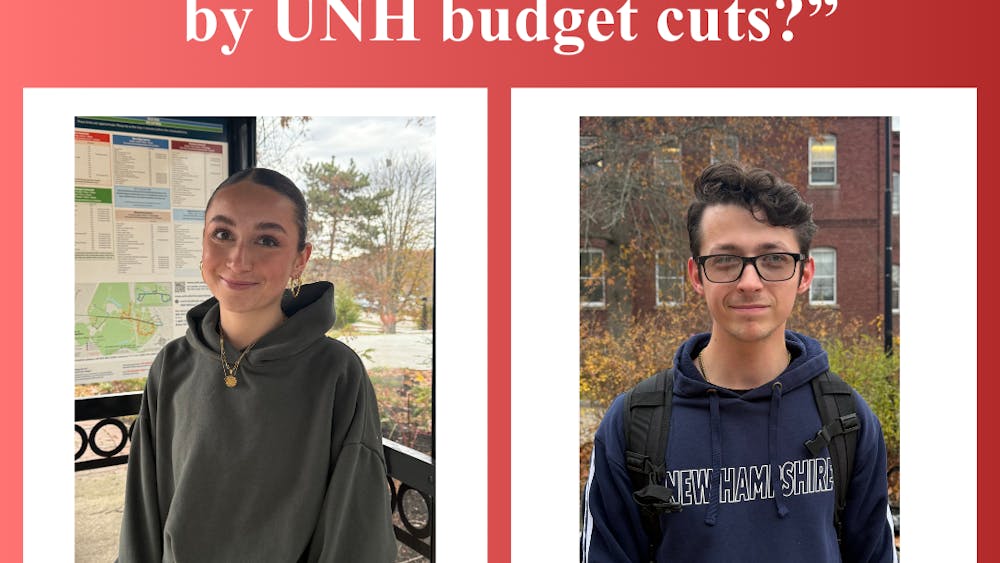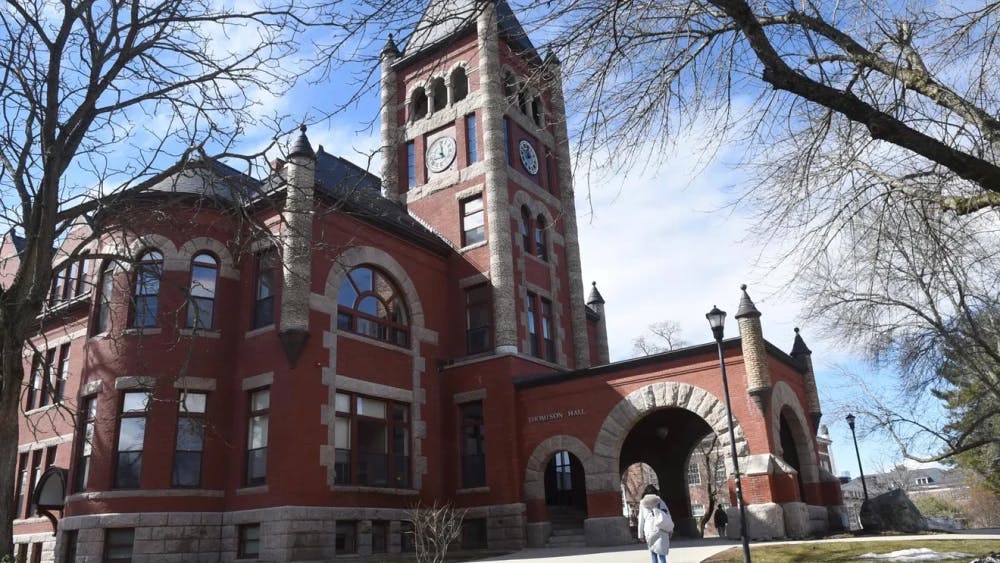With the rise of COVID-19, universities across the country had to decide whether or not to bring students back for the fall semester. The University of New Hampshire (UNH) was one of many who brought its students back in person, raising concern for the members of the surrounding community.
Durham is the site of UNH’s main campus. After deciding to reopen the campus in early summer, the town and the university began meeting to plan around mitigating risk. Having students on campus opened the community up to increased spread of COVID-19, so extensive testing and social distancing protocols were implemented. With these measures, the university was able to both successfully contact trace within their community, as well as keep a grasp on their safety levels. Still, residents worried about the impact UNH would have on their town.
Only considering the numbers, those fears are justified; COVID-19 rates in Durham increased after students came back and decreased when they left campus in November. However, according to town and university officials, numbers alone don’t tell the full story. While UNH brought more positive cases of COVID-19 to the Oyster River community, it also brought more testing; and local sources believe that the effect UNH had on local COVID-19 rates was limited. Furthermore, Town administrators, UNH employees, and students alike feel that the transition back to campus in the fall was successful.
When the pandemic first hit the Seacoast in the early spring, UNH shut down its campus and sent its students home for the rest of the semester. Following the end of that academic year, UNH spent the summer developing plans to bring students back in for the fall.
These plans included “modes of operations” that the campus would follow depending on the severity of COVID-19 in the area. According to UNH’s Coronavirus resources, the four modes of operation are normal, restricted, limited, and remote. As of December 2020, UNH moved from the “restricted” to “limited” mode of operation in accordance with rising COVID-19 rates.
Cade Ronan was a freshman at UNH this year. He describes UNH’s response to COVID as “a mixture of fun and stressful.” According to Ronan, “It was harder and different compared to other years, but I still enjoyed my first semester.”
Another part of UNH’s response plans for COVID-19 was a mask mandate. According to Erin Sharp, an associate professor of human development and family studies and chair of the Faculty Senate, UNH was one of few universities to enforce the mandate. “Lots of places recommended masks, but didn’t require them. UNH took that extra step to ensure students were being safe at all times.”
A mask mandate is only as good as the community’s willingness to abide by it though. According to Sharp, UNH students went above and beyond to follow the mandate, as well as other COVID-19 protocol. “I almost got emotional,” Sharp said. “I was seeing kids wearing masks when they didn’t even have to. Like, just walking alone in a parking lot. They all set the standard for committing to following the guidelines.”
According to Ronan, this commitment was inspired by students wanting to stay in school. “The precautions were highly enforced by all the RA’s and faculty, and we were constantly reminded of them too. Most students took it seriously because, if we didn’t, we would be sent home,” he explained.
For the transition to go as smoothly as it did, the Town of Durham had to be heavily involved with UNH’s reopening plans. Todd Selig, Durham’s town administrator, met with UNH officials several times to make sure that the spread of COVID-19 could stay as low as possible in the community. “Students were to be tested coming back to school, and Durham wanted to be sure that ongoing testing was taking place. With students returning to Durham en masse, we also felt it was important to enact a local mask ordinance as well as a school one,” Selig said.
Selig attributes this dedication to the low number of cases when UNH first came back. According to a report published by UNH titled “Fall 2020 COVID-19 Test Results,” there were between 1 and 25 positive cases during the month of August, when UNH returned for the fall semester. The number of positive cases then stayed between a range of 13 to 47 until early November.
In comparison, the total number of active cases in Durham during that period is unclear. As noted by Selig, “UNH has a more comprehensive testing program. Students are being tested twice a week, and faculty once a week. Without as rigorous of a testing program, numbers in Durham residents alone seem low, but they could be much higher.”
Sharp recognized this as well. “With school running, UNH was able to make sure students and staff were being tested regularly. In some ways, having the students back on campus was safer for Durham, because they were able to be monitored.” Sharp went on to note that “only about 35% of UNH students live in on-campus housing. The rest are in apartments and houses around campus. Those students signed leases and were going to come back no matter what. Even if UNH wasn’t running, they’d still come back to Durham.”
Indeed, in conjunction with Convenient MD and their own labs, UNH was able to test more than thirteen thousand students, two thousand staff regularly, and three thousand contractors. According to “Fall 2020 COVID-19 Test Results,” that amounts to roughly 332,000 individual tests completed between July and December 2020. Initially, a majority of those test results were negative.
However, UNH saw a spike in positive test cases beginning the week of November 2nd. Throughout the month, UNH’s positive results went from 35 to 106. This amounted in Durham’s total cases rising from 59 to 142, according to the Town of Durham’s COVID-19 update from Tuesday, December 22nd. Selig attributes this sudden increase to Halloween festivities on campus.
However, this spike in cases was not necessarily a bad thing for Durham. Both Selig and Sharp emphasized that, while cases did increase among students, the only reason the community was aware of that was because of UNH being back in the first place. “More testing will mean more positive cases,” said Sharp. “That’s much better than thinking you have lower cases because you don’t have testing.”
Sharp’s point proved to be true when students returned home. Though cases dropped to between 37 and 29 when students were sent home for holiday break, they rose again not long after. As published in Durham’s COVID-19 update, cases began to increase the week of December 17th. Selig attributes this rise, not to UNH’s impact on the community, but on COVID-19 rates increasing as a whole. “The numbers across the state are going up. Surrounding towns have also had high numbers in the last week, indicating increasing community spread,” Selig said. “On the contrary, UNH is on a downward trajectory.”
With testing capabilities already in place, Durham was able to gain awareness of this spread sooner than they would have been otherwise. In accordance, the town has increased its precautions to keep community members safe, including publishing an administrative order on isolation and quarantine guidelines to all town personnel.
In order for students to return in the spring, it’s critical that Durham and UNH work together just as they did before. According to Selig, “we are already meeting with UNH officials about the spring semester. The hope is to further enhance the measures we have in place on campus, but we are constantly re-evaluating and monitoring local conditions.” He also calls on Durham residents to do their part, saying “Absent off-campus testing, we have no way to know how severe the spread is locally. Because people can be asymptomatic, it’s only when someone falls ill do we test and see who had COVID-19. Residents shouldn’t be lured into a false sense of security even when test numbers are low, because we don’t know for certain that actual cases are low."
Both Selig and Sharp are hopeful that UNH students can return on February 1st for the spring semester as scheduled. According to Sharp, the state has the ultimate authority on whether or not UNH reopens. “We may have no choice but to shut the school down. But, if we are given the choice, I know the president and provost want to bring students back,” she said.
Students are anticipating coming back as well. Ronan said, “I’m very excited to be back for the spring semester, and I hope we can have a full second semester without being sent home early.”
More information on UNH’s COVID-19 response for the spring semester can be found on UNH’s website under their COVID-19 Information and Updates page. The Town of Durham also has a COVID-19 updates page. Additional information about COVID-19 in Durham, including the December 22nd report referenced in this article, can be found in Durham’s Friday Updates, which are published on the Town of Durham’s website.
Photo Courtesy of Danielle Forte













